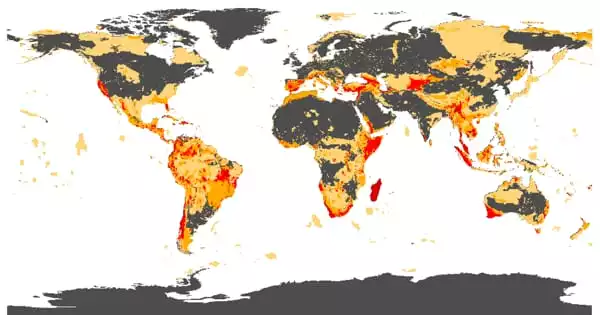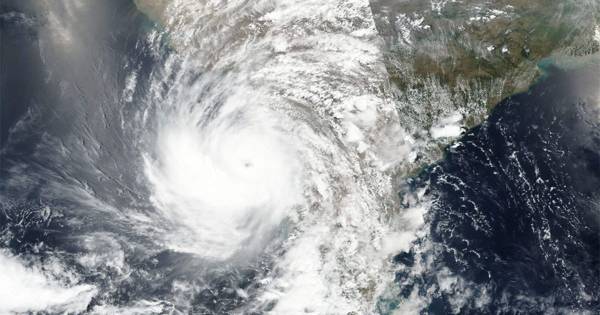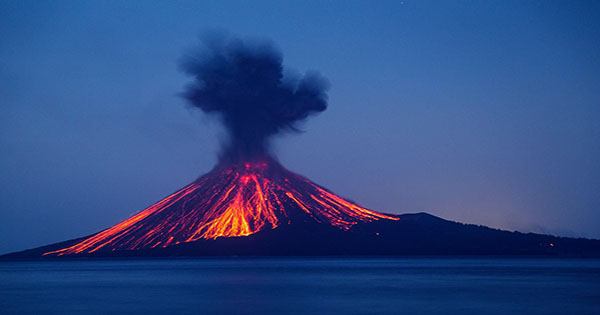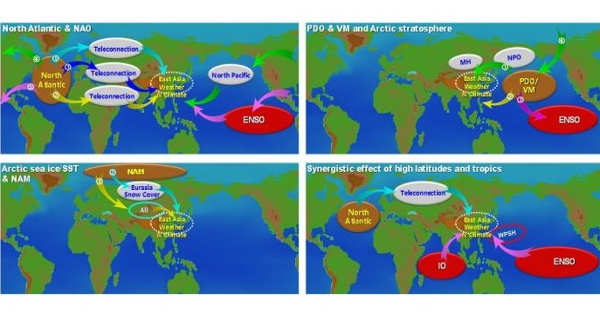New research published in Nature Ecology and Evolution uses a unique modeling approach to show the location and intensity of important threats to biodiversity on land and highlights priority sites around the world to assist inform conservation decision-making at the national and local levels.
Invasive alien species, climate change, nutrient loading and pollution, habitat change, and overexploitation are all acknowledged as major threats to biodiversity in the Convention’s work programs.
A group of top scientists has created worldwide maps for the six major dangers affecting terrestrial amphibians, birds, and mammals: agriculture, hunting and trapping, logging, pollution, invasive species, and climate change. The findings demonstrate that agriculture and logging are prevalent in the tropics and that hunting and trapping is the most geographically widespread hazard to mammals and birds. There are large continental areas where any specific amphibian, mammal, or bird species is threatened by logging, hunting, trapping, agriculture, invasive species, or climate change.
The world is suffering a worldwide nature catastrophe, yet knowledge regarding the location and severity of the challenges causing biodiversity loss is insufficient. The spatial intensity of threats and how they affect species on the ground is vital for enhancing and focusing on conservation responses. This paper provides a first attempt to map this information as well as a research path to increase our understanding of how threats to biodiversity vary around the world.
We are in the midst of a global natural catastrophe, and the next ten years are critical for taking meaningful action to combat biodiversity loss. Our findings highlight the location and magnitude of human-caused environmental risks. This data can help decision-makers at all levels identify where action to decrease these hazards will have the greatest impact on people and the environment.
Dr. Mike Harfoot
The IUCN Red List is used to map hazards to terrestrial vertebrates on a global basis, identifying the most common threat for each taxon. Agriculture is the most prevalent threat to amphibians, accounting for 44 percent of global lands, according to the study. Hunting and trapping are the most common threats to birds and animals, accounting for 50% of all land for birds and 73% of all land for mammals. Agriculture is the greatest serious hazard to amphibians, mammals, and birds all together.
The study also identifies areas where risks are most prominent. All six threats to amphibians, birds, and mammals pose a high danger of effect in Southeast Asia, particularly in the islands of Sumatra and Borneo, as well as Madagascar. Europe stood out as a region with a significant dangerous impact for amphibians due to a combination of agriculture, invasive species, and pollution. Climate change is most likely to have an influence on the polar areas, the east coast of Australia, and South Africa, affecting birds in particular.
According to Dr. Mike Harfoot of the UN Environment Programme World Conservation Monitoring Centre (UNEP-WCMC), one of the two primary authors of the paper: “We are in the midst of a global natural catastrophe, and the next ten years are critical for taking meaningful action to combat biodiversity loss. Our findings highlight the location and magnitude of human-caused environmental risks. This data can help decision-makers at all levels identify where action to decrease these hazards will have the greatest impact on people and the environment. With additional work, we will increase the accuracy and breadth of nature considered in this information.”

The scientists also integrated threat impact data with spatial information on biodiversity value to develop conservation risk maps that show high priority locations for threat reduction to assist guide conservation efforts. These maps are one tool that can be used to support and inform decision-making at the national and other levels as needed. The Himalayas, Southeast Asia, Australia’s east coast, Madagascar’s dry forest, the Albertine Rift and East Arc Mountains in eastern Africa, West Africa’s Guinean forests, the Atlantic Forest, the Amazon basin, and the Northern Andes into Panama and Costa Rica in South and Central America are among the areas identified.
“These maps also reveal that priority areas for one threat rarely overlap with that of other threats, implying that to effectively respond to the current human impact on biodiversity, we need a global response,” says Dr. Jonas Geldmann, Assistant Professor, Center for Macroecology, Evolution, and Climate, University of Copenhagen, and co-lead author of this paper.
“Despite ubiquitous sensors and advanced technology, we still know so little about the exact location and intensity of some of the most important threats to species, such as hunting and trapping and the presence of invasive species,” says Dr. Piero Visconti, a study co-author who leads the Biodiversity, Ecology, and Conservation Research Group at IIASA.
“On-the-ground surveys are essential for obtaining an accurate local picture of the prevalence and implications of these hazards, but they are difficult and resource-intensive to conduct at the scale at which some conservation choices are made.” This research is a critical first step in efficiently directing local evaluations of specific threats to terrestrial biodiversity and beginning to find the most appropriate local responses.”
The Conference of the Parties to the United Nations Convention on Biological Diversity will gather in Kunming, China, in 2022, and is likely to approve a post-2020 global biodiversity framework, or a new global strategy for nature. The research released today contributes to demonstrating the numerous types and geographic range of threats to terrestrial species, as well as the magnitude of the transformation challenge that the framework must offer if we are to conserve life on Earth.
















